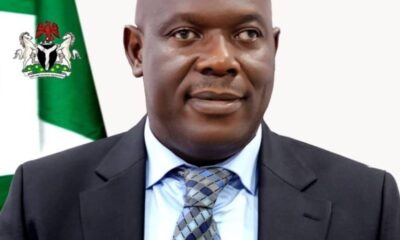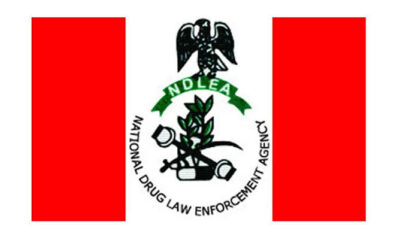Opinion
Insecurity: Indigent Pupils Opt For Refuge
A 12-year old primary five female pupil of Karaku Primary School, in Karaku Community, Rafi Local Government Area of Niger State, Zelihu Amisu, recently recounted how the spate of insecurity and killings in some parts of the state traumatizes her alongside other pupils, and militating against their resolve to consistently be in classrooms for learning which they now cherish.
Apart from Zelihu and others that insist on attending classes against all odds, many have fled with their parents for safety to the Internally-Displaced Persons (IDPs) camp in the adjacent town, precisely Central Primary School, Kagara.
UNICEF had through its GEP-3 (Girls’ Education Programme) intervention fund, invested a sum of N1,500,000.00 (One million, five hundred thousand naira) for a standard block of classrooms and other facilities in Zelihu’s school following needs assessment and collaboration with the School-Based Management Committee (SBMC) in the area. As a result, pupils’ attendance grew tremendously until heinous crimes became rampant in the state. Many of the parents had to move into the camps with their children for refuge.
The most touching aspect was how the young girl vowed to remain in school and not just only to learn for herself but would like to become a teacher in future to assist other disadvantaged children equally get educated.
From her accounts, the collaboration of UNICEF and SBMC is not only unique but has added value to her as she now reads and writes unlike when she wasn’t in school. Essentially, she emphasized that the toilets provided in the school for boys and girls respectively encourage them despite the fact they sit in the classrooms in fears over ugly incidents they often hear in nearby towns.
The greatest challenge is the fate of the pupils that are now in the IDPs camps for safety with their parents. Would the pursuit of education still remain in their minds or will they go back to the streets for begging as earlier? This was emphasized by the young girl who resolved to remain in school against the odds. Of course, it must be noted that despite her high spirit to always go to school, her parents who are farmers could move into the IDPs camp if the killings, kidnapping and other criminal activities remain unabated. If that eventually happens, certainly Zelihu’s education will be interrupted.
As many other pupils no longer come to school, perceptively, the tendency of going back to street-begging is high. Besides, these interventions cost huge funds that demand positive end results. The modern classrooms were built for pupils and the SBMC may rarely mobilize children to the school as usual when their safety is not guaranteed. It is also logical that the SBMC or CBMC (Centre-Based Management Committee) will be affected as many of its members might relocate to IDPs camps for safety. It means the authorities must brainstorm to arrest the menace.
These massive interventions must not be allowed to become unbeneficial. The essence of the intervention funds is to promote child education in the society. The question begging for answers is; what is the state government doing to address these challenges as a stakeholder? Emphatically, the primary purpose of government is welfare and security of the people. According to William Shakespeare, “Security is the chief enemy of mortals”.
From records, UNICEF had disbursed a total sum of N90 million covering 40 primary schools and 20 Integrated Qua’nic Schools (IQS) in Niger state to boost child education, especially for girls. Visibly, a good number of SBMCs and CBMCs (for IQS) caught the vision and studiously pushing it accordingly while others still need a push to key into the needed actions. Equally, the feeding programme of the federal government has continued to boost pupils’ enrollment in primary school albeit its frequent interruption often result to backsliding and reduced attendance.
Indisputably, the alarming crime rate in the country presently resulted from the neglect of the education sector for decades by prejudiced public office holders. Today, all manner of vices thrive in the society due to gross omissions and commissions. Had child-education been accorded the priority it deserves, inarguably, the monsters terrorizing the societies these days wouldn’t have existed in such numbers. Some of the gangsters, abductors and hoodlums terrorizing the society would have possibly become professionals, technocrats, entrepreneurs, among others if they were given a good foundation though education.
“Education is the most powerful weapon which you can use to change the world”. This assertion by Nelson Mandela is not a fiction but statement of fact. A child that is deprived of education will likely resort to crimes for survival when all hopes are lost. And the most dangerous deprivation a child will suffer is the basic education. Higher education may be pursued and obtained as a grown-up unlike primary education. Above all, foundational education in particular inculcates morals and gives a sense of conscience.
As Zelihu cries out as a voice of millions of indigent children in Niger State being deprived of education despite enormous supports from UNICEF in conjunction with DFID (Department for International Development) and SBMCs, government and other stakeholders must ensure that her tears do not end up as entertaining but for sober reflections to take radical actions. Possibly, the federal government may have to contemplate assigning security personnel to schools.
Commendably, UNICEF and Airtel Nigeria recently signed a Memorandum of Understanding to partner on U-Report; a UNICEF’s unique social media platform that empowers young people and communities with information to transform their communities and drive positive change on a wide range of issues affecting them with urgency. By this system, everyone is involved, especially the youths as now active participants, and not mere observers any longer.
The U-Report platform gathers information on critical issues including access to education, skills development and employability, water and sanitation, health, violence against children, safety and security, and the needs of internally-displaced persons, and then process results to the Office of the Vice President of Nigeria and other relevant agencies for necessary actions. This is a robust teamwork designed as civic responsibility for community development. Other organizations could key into similar adventures.
Umegboro, a public affairs analyst, wrote from Abuja.
Carl Umegboro
Opinion
Ndifon’s Verdict and University Power Reform

Opinion
As Nigeria’s Insecurity Rings Alarm

Opinion
The Girl Who Didn’t Dance
-

 Featured4 days ago
Featured4 days agoOil & Gas: Rivers Remains The Best Investment Destination – Fubara
-
Nation5 days ago
MOSIEND Calls For RSG, NDDC, Stakeholders’ Intervention In Obolo Nation
-
Nation5 days ago
Hausa Community Lauds Council Boss Over Free Medical Outreach
-

 Nation5 days ago
Nation5 days agoOgoni Power Project: HYPREP Moves To Boost Capacity Of Personnel
-
Nation5 days ago
Association Hails Rivers LG Chairmen, Urges Expansion Of Dev Projects
-
Nation5 days ago
Film Festival: Don, Others Urge Govt To Partner RIFF
-

 News5 days ago
News5 days agoNDLEA Arrests Two, Intercepts Illicit Drugs Packaged As Christmas Cookies
-

 News4 days ago
News4 days agoTroops Rescue 12 Abducted Teenage Girls In Borno

